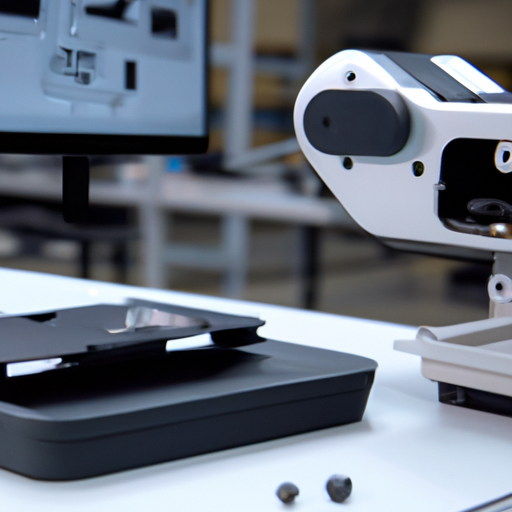The Impact of AI and RPA on Customer Service: Enhancing Efficiency and Customer Satisfaction
Artificial Intelligence (AI) and Robotic Process Automation (RPA) have revolutionized various industries, and customer service is no exception. The integration of AI and RPA in customer service has significantly enhanced efficiency and customer satisfaction. This article explores the impact of AI and RPA on customer service, highlighting how these technologies have transformed the way businesses interact with their customers.
One of the key benefits of AI and RPA in customer service is the ability to automate repetitive tasks. With AI-powered chatbots, businesses can provide instant responses to customer queries, eliminating the need for customers to wait for a human agent. These chatbots are equipped with natural language processing capabilities, allowing them to understand and respond to customer inquiries accurately. This automation not only saves time but also ensures consistent and reliable customer service.
Furthermore, AI and RPA have enabled businesses to personalize customer interactions. By analyzing customer data, AI algorithms can identify patterns and preferences, allowing businesses to tailor their services to individual customers. This level of personalization enhances the customer experience, making customers feel valued and understood. For example, AI-powered recommendation systems can suggest products or services based on a customer’s previous purchases or browsing history, increasing the likelihood of a sale.
Another significant impact of AI and RPA on customer service is the ability to handle a large volume of customer inquiries simultaneously. Traditional customer service centers often struggle to handle high call volumes, resulting in long wait times and frustrated customers. However, with AI and RPA, businesses can handle multiple customer inquiries simultaneously, significantly reducing wait times and improving customer satisfaction. This is particularly beneficial during peak periods or when dealing with sudden surges in customer inquiries.
Moreover, AI and RPA have improved the accuracy and efficiency of customer service processes. By automating tasks such as data entry and order processing, businesses can minimize human errors and streamline their operations. This not only saves time but also reduces the likelihood of mistakes that can lead to customer dissatisfaction. Additionally, AI algorithms can analyze customer feedback and sentiment, providing businesses with valuable insights to improve their products or services.
Despite the numerous benefits, it is important to note that AI and RPA should not completely replace human agents in customer service. While AI-powered chatbots can handle routine inquiries, there are instances where human intervention is necessary. Complex or emotionally charged issues often require empathy and understanding that only a human agent can provide. Therefore, businesses should strike a balance between automation and human interaction to deliver the best customer service experience.
In conclusion, the integration of AI and RPA in customer service has had a profound impact on efficiency and customer satisfaction. By automating repetitive tasks, personalizing interactions, handling high volumes of inquiries, and improving accuracy, businesses can provide a seamless and tailored customer experience. However, it is crucial to remember that human agents still play a vital role in customer service, particularly in complex or emotionally charged situations. As technology continues to advance, businesses must adapt and leverage AI and RPA to enhance their customer service capabilities.
Implementing AI and RPA in Customer Service: Best Practices and Case Studies

Implementing AI and RPA in Customer Service: Best Practices and Case Studies
Artificial Intelligence (AI) and Robotic Process Automation (RPA) have revolutionized various industries, and customer service is no exception. By leveraging these technologies, businesses can enhance their customer support processes, improve efficiency, and deliver a seamless experience to their customers. In this article, we will explore the best practices for implementing AI and RPA in customer service, along with some real-world case studies that highlight their effectiveness.
One of the key best practices for implementing AI and RPA in customer service is to start small and focus on specific pain points. By identifying the areas where automation can bring the most significant impact, businesses can prioritize their efforts and achieve quick wins. For example, many companies have successfully implemented chatbots powered by AI to handle basic customer inquiries, freeing up human agents to focus on more complex issues. This not only improves response times but also reduces costs associated with customer support.
Another best practice is to ensure seamless integration between AI and RPA systems and existing customer service platforms. This integration allows for a smooth flow of information and enables AI-powered systems to access relevant customer data in real-time. By leveraging this data, businesses can provide personalized and contextually relevant support to their customers, leading to higher satisfaction levels. For instance, a leading e-commerce company integrated AI and RPA into their customer service platform, enabling their chatbot to access customer order history and provide tailored recommendations, resulting in increased sales and customer loyalty.
Furthermore, it is crucial to continuously monitor and analyze the performance of AI and RPA systems to identify areas for improvement. By leveraging analytics and machine learning algorithms, businesses can gain valuable insights into customer behavior, preferences, and pain points. These insights can then be used to refine and optimize the AI and RPA systems, ensuring they deliver the best possible customer experience. A telecommunications company used this approach to analyze customer interactions with their AI-powered virtual assistant and identified common issues that were causing frustration. By addressing these issues, they were able to significantly reduce customer complaints and improve overall satisfaction.
Real-world case studies further demonstrate the effectiveness of AI and RPA in customer service. A global airline implemented an AI-powered chatbot that could handle flight booking inquiries, provide real-time flight updates, and assist with baggage tracking. This reduced the workload on human agents, resulting in faster response times and improved customer satisfaction. Similarly, a leading insurance company implemented RPA to automate repetitive tasks such as claims processing and policy renewals. This not only reduced errors but also allowed their agents to focus on more complex customer interactions, resulting in higher customer retention rates.
In conclusion, implementing AI and RPA in customer service can bring numerous benefits to businesses, including improved efficiency, cost savings, and enhanced customer satisfaction. By starting small, integrating with existing systems, and continuously monitoring performance, businesses can maximize the impact of these technologies. Real-world case studies further highlight the effectiveness of AI and RPA in transforming customer service processes. As businesses strive to deliver exceptional customer experiences, AI and RPA are becoming indispensable tools in their arsenal.
The Future of Customer Service: AI and RPA Trends and Predictions
The future of customer service is rapidly evolving, thanks to advancements in artificial intelligence (AI) and robotic process automation (RPA). These technologies are revolutionizing the way businesses interact with their customers, providing faster, more efficient, and personalized experiences. In this article, we will explore the trends and predictions for AI and RPA in customer service.
AI has already made significant strides in customer service, with chatbots being one of the most prominent examples. These virtual assistants are capable of understanding and responding to customer queries in real-time, providing instant support and reducing the need for human intervention. As AI continues to improve, chatbots will become even more sophisticated, offering a seamless and natural conversation experience.
Another exciting trend in AI for customer service is sentiment analysis. By analyzing customer interactions, AI can detect emotions and sentiments, allowing businesses to gauge customer satisfaction levels and address any issues promptly. This technology enables companies to proactively resolve problems and enhance the overall customer experience.
RPA, on the other hand, focuses on automating repetitive and mundane tasks, freeing up human agents to handle more complex and value-added activities. For instance, RPA can automate data entry, order processing, and even generate personalized responses to customer inquiries. By automating these routine tasks, businesses can improve efficiency, reduce errors, and ultimately deliver faster and more accurate customer service.
One of the key predictions for AI and RPA in customer service is the integration of these technologies with existing customer relationship management (CRM) systems. By combining AI and RPA with CRM, businesses can create a comprehensive customer service platform that seamlessly integrates data, automates processes, and provides personalized experiences. This integration will enable companies to have a 360-degree view of their customers, allowing them to deliver highly targeted and relevant support.
Furthermore, AI and RPA will play a crucial role in self-service customer support. With the advancements in natural language processing, customers will be able to interact with AI-powered systems using their preferred communication channels, such as voice assistants or messaging apps. These systems will be capable of understanding complex queries, providing accurate information, and even resolving issues without human intervention. Self-service options will empower customers, giving them the flexibility to find solutions at their convenience.
However, it is important to note that while AI and RPA offer immense potential for customer service, human agents will still play a vital role. The human touch and empathy cannot be replicated by machines. Instead, AI and RPA should be seen as tools to augment human capabilities, allowing agents to focus on building relationships, solving complex problems, and providing personalized support.
In conclusion, AI and RPA are transforming the future of customer service. These technologies are revolutionizing the way businesses interact with their customers, providing faster, more efficient, and personalized experiences. From chatbots to sentiment analysis, AI is enhancing customer interactions, while RPA automates repetitive tasks, freeing up human agents for more valuable activities. The integration of AI and RPA with CRM systems and the rise of self-service options will further enhance the customer experience. However, it is crucial to remember that human agents will always be essential in delivering exceptional customer service. The future of customer service lies in the harmonious collaboration between humans and machines.



